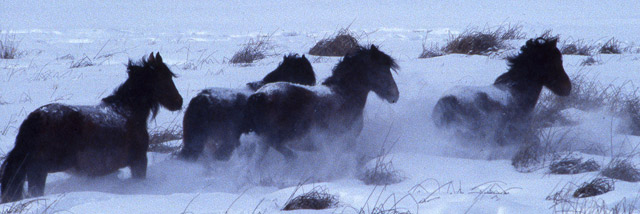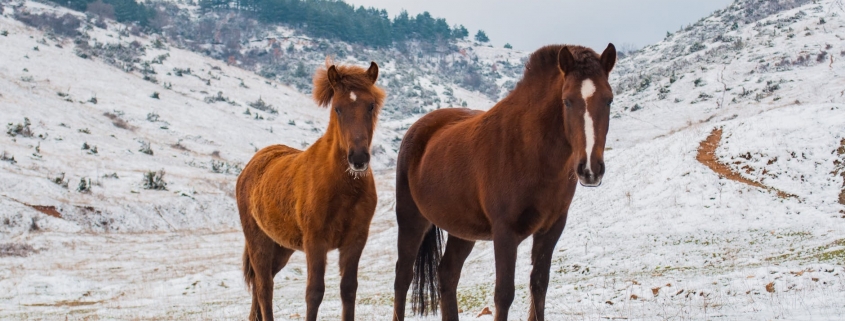DNA Study on Bc-Brittany Triangle Wild Horses Challenges History
A soon to be released study of the genetics of wild horses in a remote corner of the province poses more questions than it answers. The study by world horse DNA expert Dr. Cothran and biologist Wayne McCrory was done at the Texas A & M University for VWS, FONV (Friends of Nemaiah Valley) and the Xeni First Nations. It is the first of its kind in western Canada. The Brittany Triangle is the remotest area left in western Canada where some 200 wild horses have roamed since before the coming of Europeans. The DNA study area is part of the Eagle Lake Henry Cayuse wild horse reserve created by the Xeni Gwet’in First Nations – the only wild horse preserve in western Canada. DNA was analyzed from blood samples taken from domestic horses captured in the wild as well as from hair samples collected from tree branches and bedding areas. Historic documentation indicates that Brittany horses most likely originated from horses of Spanish ancestry brought in to the area by Tsilhqot’in First Nations about 1740 along ancient trade routes from Plateau grasslands to the south. However, the DNA study found very little remaining Spanish ancestry. The origins were more from the Canadian Heritage Horse breed or its ancestors. The most intriguing result of the genetic study is the possibility that Yakut horses, an ancient horse of Russian heritage, also contributed to the origins of the herd. How these bloodlines got to the remote Chilcotin is a mystery since the Russians only ever brought a small number of horses across to their Pacific coast fur trading posts. The report will be released in several months.

